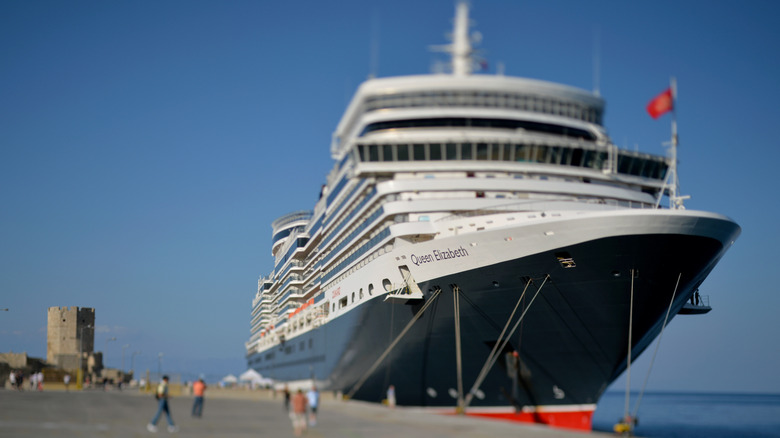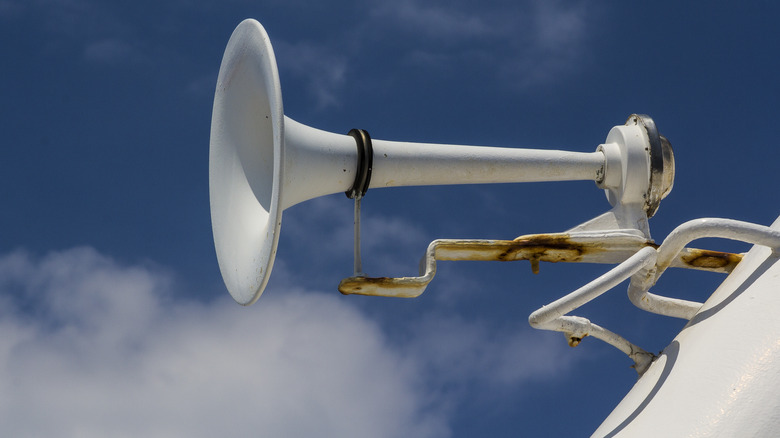What It Means When A Ship Honks 3 Times
If you've spent any time at sea — or even just sitting on the dock of the bay — perhaps you've heard the unmistakable sound of a ship blasting its horn in the distance. Have you ever wondered what they're honking for? No, it's not because they're showboating. Similar to when you hear a trucker honk at you or see a biker point two fingers down to the ground, there's actually a meaning behind a ship's honk.
For centuries, ships have been using horn signals as a form of communication. They play a crucial role at sea, sending important maritime messages to other vessels on the water to ensure safe and smooth navigation. Pay attention to the number and length of the honks, as each honking pattern carries a different meaning. A common horn signal you might hear is a succession of three short blasts, and if you're trailing behind them, you'd better move, because that boat is backing up.
Three short blasts indicates a ship in reverse
To correctly identify the horn pattern you're hearing, it's important to know the technical difference between a short blast and a long one. According to Boat Ed, a short horn blast is one second in duration, while a long one lasts from four to six seconds. Short blasts indicate a change in the ship's direction, essentially serving the same purpose as blinkers on a car. One short blast means the ship is changing its course to the port (left) side. Two short blasts indicate a change in course to the starboard (right) side. And finally, three short blasts means the ship is operating in astern propulsion. In layperson's terms: The ship is reversing.
In some cases, you may hear one prolonged horn blast before the three shorter blasts. The three honks still indicate that the ship is backing up, but the addition of a singular long blast conveys that the vessel is preparing to leave the dock. You can hear a clear example of the prolonged horn blast in this scene from James Cameron's "Titanic," which gives a historically accurate depiction of the famous ocean liner leaving the port in Southampton. As was the case for the real-life Titanic, the singular long blast wasn't followed by the three short blasts because the ship left the dock without reversing.
The evolution of horn signals
In the early days of sea travel, ships weren't equipped with horns to communicate. Instead, sailors conveyed maritime messages using hand signals, flags, and bells, which were only effective methods for short-range communication. With the invention of steam-powered ships in the late 1700s, seafarers began trading bells for steam whistles, ultimately upgrading to pneumatic horns (also known as air horns) in the early 20th century. These revolutionized maritime communication, producing a louder sound with a further range.
Nowadays, sound-producing devices on ships are federally regulated. As the United States Coast Guard (USCG) Minimum Equipment Requirements for Recreational Vessels states: "[A] horn or whistle [is] recommended to signal intentions or position. Under Rule 33 of the Navigation Rules, boats under 20m MUST have aboard a means of making an efficient sound."
According to maritime reports (as relayed by Boss Horn), one of the leading causes of accidents at sea is improper horn use. In addition to horns operating properly, it's crucial for the signals they produce to be understood and received. So, the next time you hear a three horn blast (or any type of horn-blowing from a maritime vessel), know that they're honking with purpose and engaging in the sacred language of the sea.


